ScottishPower CCS Consortium
Type of resources
Topics
Keywords
Contact for the resource
Provided by
Formats
Update frequencies
-
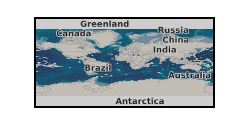
In March 2010, the Scottish CCS (Carbon Capture & Storage) Consortium began an extensive Front End, Engineering and Design (FEED) study to assess what would be required from an engineering, commercial and regulatory, perspective in order to progress the CCS demonstration project at Longannet Power station in Scotland through to construction. The study yielded invaluable knowledge and the resulting material are available for download here. This section of the report provides a summary of key decisions and design changes made during FEED that have resulted from the development of the End-to-End solution and the design works conducted by each of the Consortium Partners. The information described in this section captures the design decisions and changes that have had the most prominent impact on the End-to-End Basis of Design. For each key design change/decision, the background, options considered and the final outcome is described. The ScottishPower CCS Consortium Decision Register can be found in PDFs . The appropriate summary section from the Feed Close Out Report can be downloaded as a PDF (Key FEED decisions.pdf). The main text of the FEED Close Out Report, together with the supporting appendix for this section can be downloaded as PDF files. Note this dataset is a duplicate of the reports held at the National Archive which can be found at the following link - http://webarchive.nationalarchives.gov.uk/20121217150421/http://decc.gov.uk/en/content/cms/emissions/ccs/ukccscomm_prog/feed/scottish_power/feed_decisions/feed_decisions.aspx
-
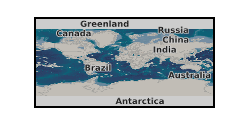
In March 2010, the Scottish CCS (Carbon Capture & Storage) Consortium began an extensive Front End, Engineering and Design (FEED) study to assess what would be required from an engineering, commercial and regulatory, perspective in order to progress the CCS demonstration project at Longannet Power station in Scotland through to construction. The study yielded invaluable knowledge and the resulting material are available for download here. The UK Government's basic premise for financially supporting CCS demonstration is to facilitate further commercial scale CCS projects in the UK and internationally. DECC have made knowledge transfer activities a key requirement of the UKCCS Demonstration Competition. The Consortium identified stakeholder groups particularly relevant for knowledge transfer activities. Stakeholders were categorised in terms of: Knowledge needs; Potential to influence CCS deployment; Experience/ expertise they can bring to demonstration knowledge; Potential to disseminate demonstration knowledge; The assessment identified six priority audience groups: Academics, Environmental NGOs, Finance and Insurance, Industry, Initiatives and Developers and Regulatory and Policy. The Stakeholder Profiling Interviews sought to answer the following questions: Who are the key CCS stakeholders? What information are these stakeholders interested in from a CCS demonstration? What are the preferred methods for key stakeholders to receive and access information? Are the key stakeholders interested in interacting with CCS demonstrations, and if so, what is the preferred method to facilitate this interaction? This section of the FEED Close Out Report combines over 30 stakeholder interviews, with examples of knowledge transfer leading practice. Other FEED workstreams considered wider stakeholder engagement, for example, local community engagement and public communication. The appropriate summary section from the Feed Close Out Report can be downloaded as a PDF (Stakeholder profiling.pdf). The main text of the FEED Close Out Report, together with the supporting appendix for this section can be downloaded as PDF files. Note this dataset is a duplicate of the reports held at the National Archive which can be found at the following link - http://webarchive.nationalarchives.gov.uk/20121217150421/http://decc.gov.uk/en/content/cms/emissions/ccs/ukccscomm_prog/feed/scottish_power/stakeholder/stakeholder.aspx
-
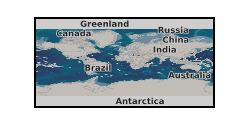
In March 2010, the Scottish CCS (Carbon Capture & Storage) Consortium began an extensive Front End, Engineering and Design (FEED) study to assess what would be required from an engineering, commercial and regulatory, perspective in order to progress the CCS demonstration project at Longannet Power station in Scotland through to construction. The study yielded invaluable knowledge and the resulting material are available for download here. This section of the report provides details of the regulatory work carried out during FEED to achieve the legal requirements of constructing and operating an End-to-End CCS system within European, UK and Scottish legislative frameworks, including implications for consenting of the power plant from which CO2 is to be captured. During the development of the Outline Solution for the UKCCS Demonstration Competition, the Consortium developed a comprehensive Consents Register that tracks month by month progress and captures all relevant Consents, permits and licenses required by the End-to-End CCS chain. A summary of the Consortium progress as of the end of Q1 2011 is provided. Written against a backdrop of significant regulatory change and uncertainty, this report also outlines the process undertaken in identifying consenting risk and provides commentary on the key risks identified, as contained within the project Risk Register. The appropriate summary section from the Feed Close Out Report can be downloaded as a PDF (Consents and permitting.pdf). The main text of the FEED Close Out Report, together with the supporting appendix for this section can be downloaded as PDF files. Note this dataset is a duplicate of the reports held at the National Archive which can be found at the following link - http://webarchive.nationalarchives.gov.uk/20121217150421/http://decc.gov.uk/en/content/cms/emissions/ccs/ukccscomm_prog/feed/scottish_power/consents/consents.aspx
-
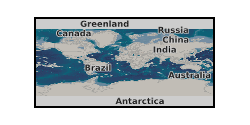
In March 2010, the Scottish CCS (Carbon Capture & Storage) Consortium began an extensive Front End, Engineering and Design (FEED) study to assess what would be required from an engineering, commercial and regulatory, perspective in order to progress the CCS demonstration project at Longannet Power station in Scotland through to construction. The study yielded invaluable knowledge and the resulting material are available for download here. This section of the report illustrates how the End-to-End CCS chain must be considered as a system as well as separate elements. It builds upon the description of the individual elements contained in Section 3, and captures the development of the End-to-End CCS chain design carried out during FEED. Specifically, this section focuses on the following aspects: Commissioning the system in preparation for operations, as well as decommissioning at the end of the capture and storage period; Operations and maintenance activities; Control; Metering and monitoring; Venting; This section also provides some selected information on the individual CCS chain elements and a summary of the RAM (reliability, availability and maintainability) analysis undertaken during FEED of which one of the key outputs was the anticipated CO2 injection profile for the project. The appropriate summary section from the Feed Close Out Report can be downloaded as a PDF (End to end CCS chain operation.pdf). The main text of the FEED Close Out Report, together with the supporting appendix for this section can be downloaded as PDF files. Note this dataset is a duplicate of the reports held at the National Archive which can be found at the following link - http://webarchive.nationalarchives.gov.uk/20121217150421/http://decc.gov.uk/en/content/cms/emissions/ccs/ukccscomm_prog/feed/scottish_power/ccs_chain/ccs_chain.aspx
-
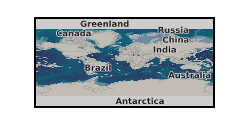
In March 2010, the Scottish CCS (Carbon Capture & Storage) Consortium began an extensive Front End, Engineering and Design (FEED) study to assess what exactly would be required from an engineering, commercial and regulatory, perspective in order to progress the CCS demonstration project at Longannet Power station in Scotland (Goldeneye) through to construction. The study has yielded invaluable knowledge in areas such as cost, design, end-to-end CCS chain operation, health and safety, environment, consent and permitting, risk management, and lessons learnt. The ScottishPower CCS Consortium FEED study material are available for download.
-

In March 2010, the Scottish CCS (Carbon Capture & Storage) Consortium began an extensive Front End, Engineering and Design (FEED) study to assess what would be required from an engineering, commercial and regulatory, perspective in order to progress the CCS demonstration project at Longannet Power station in Scotland through to construction. The study yielded invaluable knowledge and the resulting material are available for download here. This chapter contains the output from many of the Project Management processes which control and report the progress of the FEED. The following commentary gives the reader a brief guide to the project management process or approach which has been used. FEED Programme: In order to scope out, control and report the FEED activity, a Work Breakdown Structure was developed. This structure had the following hierarchy - Level 1 - Chain Element; Level 2 - Phase; Level 3 - Discipline; Level 4 - Work Package (including Cost Time Resource definition); The programme is in the form of a fully resource loaded, logically linked network diagram. Risk Management: Throughout this FEED the management of risk was a key activity. This has helped inform and better understand the important risks faced by the project. This 'first of a kind' project saw a large number of new risks being identified, assessed, controlled and monitored during FEED. Project Cost Estimates: An estimating philosophy was established in FEED to set the standards for the estimates produced from across the project participants, including: To ensure a consistent approach in the collection, calculation and presentation of costs across all FEED Participants; To ensure that all likely project costs are identified and captured along with all associated details. A standard template was established for each participant to complete with the details of their section (i.e. Chain Element) of the cost estimate. The cost estimate was broadly consistent with Class 3/4 estimate as defined by AACE. Further supporting documents for chapter 10 of the Key Knowledge Reference Book can be downloaded. Note this dataset is a duplicate of the reports held at the National Archive which can be found at the following link - http://webarchive.nationalarchives.gov.uk/20121217150421/http://decc.gov.uk/en/content/cms/emissions/ccs/ukccscomm_prog/feed/scottish_power/abstract/abstract.aspx
-

In March 2010, the Scottish CCS (Carbon Capture & Storage) Consortium began an extensive Front End, Engineering and Design (FEED) study to assess what would be required from an engineering, commercial and regulatory, perspective in order to progress the CCS demonstration project at Longannet Power station in Scotland through to construction. The study yielded invaluable knowledge and the resulting material are available for download here. This section of the report aims to inform potential developers of CCS of the impact of risks on the design of large-scale CCS. It discusses the ScottishPower CCS Consortium approach to risk management, looking particularly at the identification and mitigation of specific areas of risks during FEED and the mitigating actions required for the major residual risks. The section covers five key areas: Overview of the risk assessment process through FEED, including mitigation measures, major movement of the Top 50 risks on the Risk Register, and current active risks; Mitigation strategies for major project risks; Mitigation strategies for those risks with the potential to cause significant delay to the Overall Project Programme; Allocation and insurability of risks; Integrity and risk assessment of existing plant to be integrated; From the outset of FEED, risk management was co-ordinated by the Risk Workstream. The Risk Workstream included representatives of each of the Consortium Partners and Aker Clean Carbon. The Risk Workstream had a remit to capture, codify and report on progress with risk management throughout the study. The management of the risks themselves remained with the risk owners. The Consortium's risk management strategy was based on the provision of a cross-Consortium, over-arching risk management framework. This was developed to: Provide visibility of the Consortium's risk exposure Make best use of the Consortium Partners' risk management experience Facilitate the assessment of the impact of changes within the scope of one Partner's risk profile to the others Encourage the identification of risks at Partner interfaces Provide consistent risk reporting across the Consortium in line with agreed requirements Each Consortium Partner was responsible for reporting monthly on their risks to the Consortium risk lead, who in turn collated the Consortium Partner updates and reported the overall Consortium risk status to the Consortium Management Office and DECC to show how the total risk value changed over the course of FEED. The appropriate summary section from the Feed Close Out Report can be downloaded as a PDF (Risk management.pdf). The main text of the FEED Close Out Report, together with the supporting appendix for this section can be downloaded as PDF files. Note this dataset is a duplicate of the reports held at the National Archive which can be found at the following link - http://webarchive.nationalarchives.gov.uk/20121217150421/http://decc.gov.uk/en/content/cms/emissions/ccs/ukccscomm_prog/feed/scottish_power/risk/risk.aspx
-
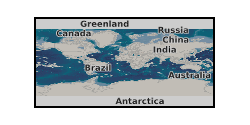
In March 2010, the Scottish CCS (Carbon Capture & Storage) Consortium began an extensive Front End, Engineering and Design (FEED) study to assess what would be required from an engineering, commercial and regulatory, perspective in order to progress the CCS demonstration project at Longannet Power station in Scotland through to construction. The study yielded invaluable knowledge and the resulting material are available for download here. This section provides information on how the Consortium approaches the health, safety and environmental aspects of the End-to-End CCS chain. The key components of the Health and Safety (H&S) Policies already in place for each Consortium Partner include: Commitment from top level management; Systematic approach to ensure legal compliance; Provision of training to develop H&S awareness and competence; Providing a safe and healthy work environment; Identify, assess and control hazards and risks; Set targets and objectives for improvement; Monitor, measure and review H&S performance; Report on H&S performance, both internally and externally; Extend the policy to contractors and monitor their compliance; Include H&S performance in staff appraisal and reward accordingly; Achieve continuous improvement; This section gives some background and the key drivers to health, safety and environmental aspects of carbon capture, transportation and storage. The narrative describes the Consortium's method of integrating process safety activities with the overall design process. In the appendices, the full End-to-End CCS safety report is provided, followed by detailed summaries of all the CCS chain specific health, safety and environmental work undertaken during FEED. The appropriate summary section from the Feed Close Out Report can be downloaded as a PDF (Health, safety and environment.pdf). The main text of the FEED Close Out Report, together with the supporting appendix for this section can be downloaded as PDF files. Note this dataset is a duplicate of the reports held at the National Archive which can be found at the following link - http://webarchive.nationalarchives.gov.uk/20121217150421/http://decc.gov.uk/en/content/cms/emissions/ccs/ukccscomm_prog/feed/scottish_power/health_safety/health_safety.aspx
 NERC Data Catalogue Service
NERC Data Catalogue Service